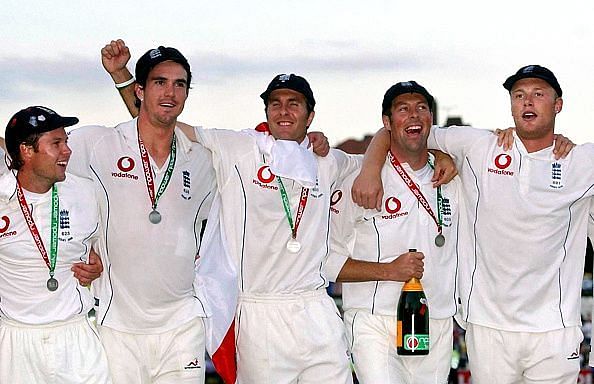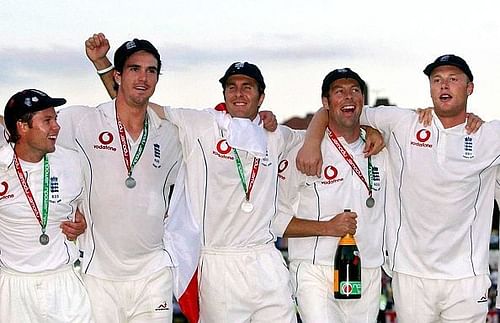
The Hundred: How the innovative tournament can reinvigorate England cricket

Ever since the botched announcement of The Hundred went public, the nature of which immediately put the oft-maligned ECB onto the back foot, there has been an almost constant, ever-increasing stream of criticism flowing towards the contentious decision makers at the head of the English game.
How could they push the smaller counties, already marginalised by the Test match grounds, even further to the periphery? How could they shunt the County Championship, supposedly the ECB's blue-riband event, to the bookends of the season? By reducing the rather successful 50-over game to a glorified second string event, how can England's blistering, pulse-racing, side of dashers imagine staying at the forefront of the ODI game?
Also Read: The Hundred - Funky, confused future of cricket
These were all legitimate questions posed by established former players, commentators, journalists and average cricket fans up and down the country. It seemed like madness. For goodness sake, they sold it to us on the premise they were targeting "people who don't like cricket", despite the fact the product is still, undoubtedly, cricket. Just a little bit shorter. It was obvious, the ECB had finally given in to the irresistible lure of humungous sponsorship deals.
However, within the finer details, lies their genius.
Initially, the idea of reducing the games to 100 balls seemed pointless. They said it will make the game simpler to understand for fans, which seems a bit condescending. Just because someone doesn't like cricket, it doesn't mean they can't count. Try explaining the LBW law to the uninitiated, or try to tell someone why it is difficult to say which team is winning. Cricket is not a simple game, it never will be, no matter how much you condense it. That is part of its beauty.
So, why did they toy with an already hugely successful format? The answer is obvious. Terrestrial television.
Can The Hundred eventually push kids towards Test cricket?
2005 was the heyday of modern English cricket. There is no doubt about that. That glorious summer of Kevin Pietersen's flamingo flicks, Gary Pratt's run out, Simon Jones' reverse swing and Andrew Flintoff's unforgettable spell will live forever in the memory. Quite frankly, if you didn't own the DVD boxset of the 2005 Ashes series victory, you couldn't rightfully call yourself a cricket fan.
Even now, I'm getting warm feelings just picturing Marcus Trescothick run rampant at Edgbaston after Ricky Ponting decided to have a bowl despite losing Glenn McGrath to injury after rolling his ankle on a stray cricket ball.
During that summer, cricket was at the forefront of the nation's attention. Everybody wanted to talk about it, watch it, and most importantly, they wanted to play it. The number of kids playing the game, desperate to own a Woodworm bat and be like Flintoff and Pietersen (having successfully persuaded my ever obliging father into making this purchase for me, I speak from personal experience here) meant junior sides were stocked with talented kids eschewing other sporting avenues.
Then, cricket disappeared. It disappeared behind the paywall of Sky, available only to the elite and those desperate enough to pay through the nose to watch it (again, thanks Dad). Sure, Sky has done great things for the game, ploughing money in to improve facilities, structures and everything else you could possibly wish for.
Their coverage is also peerless. Even if one does yearn for the nostalgia of Simon Hughes' segments as 'The Analyst' on occasion, they have taken the coverage of the sport to new levels, greatly enhancing the viewing experience of those who are able to see it.
But therein lies the problem, not everyone can see it. For a generation of kids since 2005, cricket has been a spec in the distance, a game for the elite, barely even worth considering for the athletically gifted.
This shows in the same junior sides who are now chronically short of players, folding or merging with other teams just to make up the numbers. Who knows how many we may have lost? How many might have been entranced by Pietersen's outrageous switch-hit against Muttiah Muralitharan in 2006? By Flintoff's final on-one-leg stand against the Australians and Ponting in 2009?
For all the flaws of The Hundred, and there are many, for all the flaws of the ECB, and there are many, they have at least finally returned the summer game to terrestrial television, by making the games just that little bit shorter.
At least now, a precocious 7-year-old will have the chance to see Jos Buttler scooping a 90 mph yorker over the keeper's head for six and become transfixed by the game forever. That transfixion will transfer to Test cricket, because once you fall for cricket, you fall hard. Once you learn the intricacies and the nuances, you can't help but love Test cricket, and pity those who just don't get it.
Amongst a catalogue of terrible decisions, which have put the game in a state of flux, let's applaud the ECB for making one fantastic decision and returning cricket to the masses. From there, cricket will sell itself.